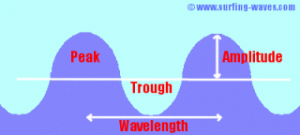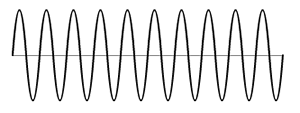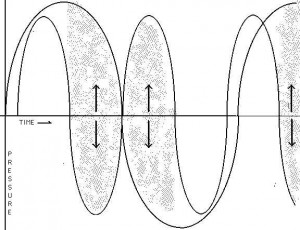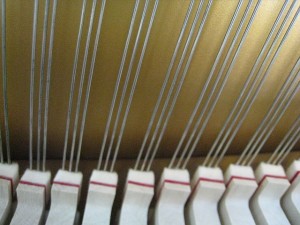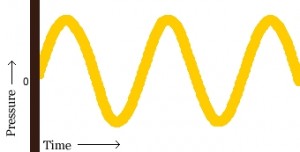Today’s post has to do with sound waves, and can look complicated at first, but I promise, it’s pretty simple to understand. I love explaining this one to the customers who ask. I keep it short and simple for them, so I’ll keep it short and simple here, fair enough?
“My piano sounds louder since you’ve tuned it…what did you do?”
I’ve heard this one so many times, and there is a simple answer. I tuned it! “Ok, I know that already….so really, what’s going on here,” you ask?
The simple answer is that before tuning, the 3 strings of each note (or two strings per note in the tenor section) don’t match each other. The sound waves bump into each other, and when they do, they cancel each other out from making any sound…this creates a “whah – whah” or dead sounds when the strings are out of tune with each other. However, after tuning, the 3 strings (or two in the tenor) do match, and the waves are now working together to produce more sound, not against each other.
That’s basically it.
Now, for those of you that just wanted the simple answer….you’re done…you can go back to your Sudoku puzzle now! However, if you want a little better explanation, read on.
Sound waves : Working together…or not? That is the question!
I think we all remember back to science class when we learned about sound waves, right? A single string that is played will produce a certain soundwave having a particular frequency (wavelength) and amplitude. Furthermore, any sound wave will have peaks (high points) and troughs (valley low points) like you see below.
Cycles: While understanding cycles is not really important to understanding what I’m trying to explain today, I’ll throw it in just as a refresher to how waves work. Each wave starts at the line, goes up above the horizontal line, then down below the line, then back to the line. That is one cycle. (The picture to the left shows about 2 wave cycles. This happens many times a second for any given note.
Your piano is tuned at A=440, that means the A above middle C has a wave that cycles (or reoccurs) 440 times each second.
Now, back to the explanation…what you see in this picture is a single wave. This is what a single string of any note would make. (Side-note: a single string almost always sounds good and pure because it doesn’t have another string’s wave to potentially “fight” with).
OK, now imagine you take another note’s wave and lay it right over this one. If they are exactly the same frequency, the peaks and troughs would line up, an exact match. However, if the second note created a pitch with a frequency a little faster or slower than the the first note, (the peaks and troughs would happen sooner or later and will not line up) this note would be either sharp or flat from the first note. Every so often the the faster wave would overtake, or “lap” the other, just like a runner that runs so much faster than another, that he eventually “laps” the slower guy (this always happened to me- I was the slow guy on the track in High School).
Every time this happens you will hear a beat, which sounds like a “whah” sound. When the waves of each note played wind up at the peak at the same time, they get together and you hear sound. When they are at the trough at the same time, you hear sound. When the waves wind up on opposite sides of the center line, they cancel out. (Much like + and – cancel in math).
Notice in this picture, the greyed areas the sound is cancelled. The first, 3rd, and 4th areas you see in the picture are clear, meaning that the waves are together and are producing sound.
So, let’s put it together and see what it means for the piano.
On a piano there are usually 3 strings per note. So, for one note on the piano to be in tune with itself, the waves of all three strings need to be traveling exactly the same speed. When they do, guess what….the peaks and troughs now match up creating more….you guessed it…sound!
The bold yellow line represents all 3 waves (the 3 strings of a single note on the piano) traveling exactly together…in tune with each other. No fighting, no bickering for who’s first to the finish line, none of that. They work together to help each other out, thus creating a more unified tone with greater volume.
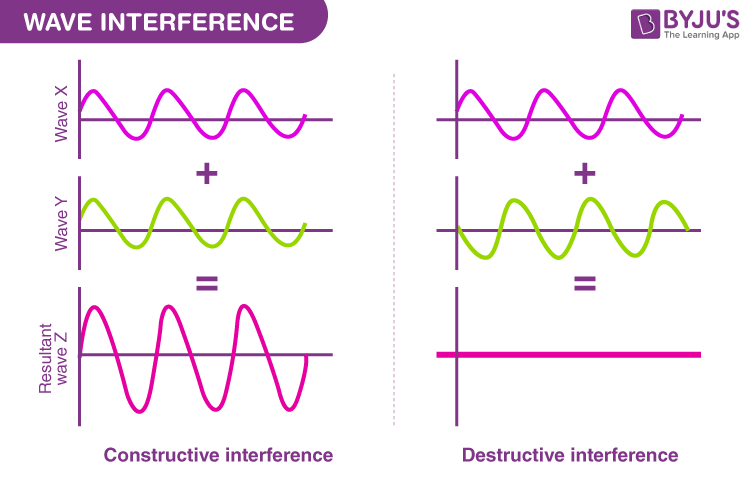
Here’s another diagram that shows what’s happening. On the left, wave x and y are the same and in phase, and when combined create an amplified wave z. This is called Constructive Interference. On the right, wave x and y are the same, but out of phase, and the result is a canceled wave z. This is called destructive interference. No sound is created. So, when a piano is perfectly in tune, you have lots of constructive inteference and amplified sound. When the piano goes out of tune, you don’t have 100% destructive inteference, or the piano would be totally silent…but what you have is enough destructive inteference that you hear lots of whah, whah, whah beats, and reduced overall volume of the piano, indicating that many of the waves are cancelling out in very random ways.
Here’s a real life example that may help.
Imagine a soloist singing in an auditorium. Suppose he/she is singing at a medium to loud volume. At the back of the auditorium, they sound good, clear, but maybe not too loud. (that would be like a single string sounding in a piano).
Now, imagine a trio (three singers) in the same auditorium. They are singing in unison, the same melody of a song. They are also each singing the same volume that the soloist did. The difference will be that they will have more volume as a group, even if each is only singing a normal volume. (this would be like the three strings in tune with each other).
Lastly, imagine what it would sound like if each of the three each sang a different song, different melody, different words, different rhythm, etc. but at the same volume as they were before. What might you hear? Discord for sure, but you would catch bits and pieces of each and none would be as well heard as if they were singing the same thing, together.
It’s much easier to hear the group singing the same thing at the same time, right?
One last example: Here’s another way I like to think about how waves behave when they are in tune or not. It’s kind of like riding a horse. If you’re not careful, you’ll wind up saddle sore if when the horse goes up, you go down, and vice-versa. Every time you bump the saddle, would be like a beat (or “whah) like I was talking about. Not exactly, as all analogies don’t work perfectly, but that’s the idea. You get saddle sore when horse and rider are working against each other. The better way is to be in “tune” with the horse….riding “with” the horse. When he goes up, you go up. When he goes down, you go down. Much better to work together, than against each other. That’s really all there is to it! When we tune, we are trying to get all the waves of a certain note to work together, and when they do, they produce not only a better tone, but more sound! Pretty neat, huh!
Kind of like life, isn’t it. We work together, we get more done!
Well that’s all for today. Until next time…make a joyful noise!
